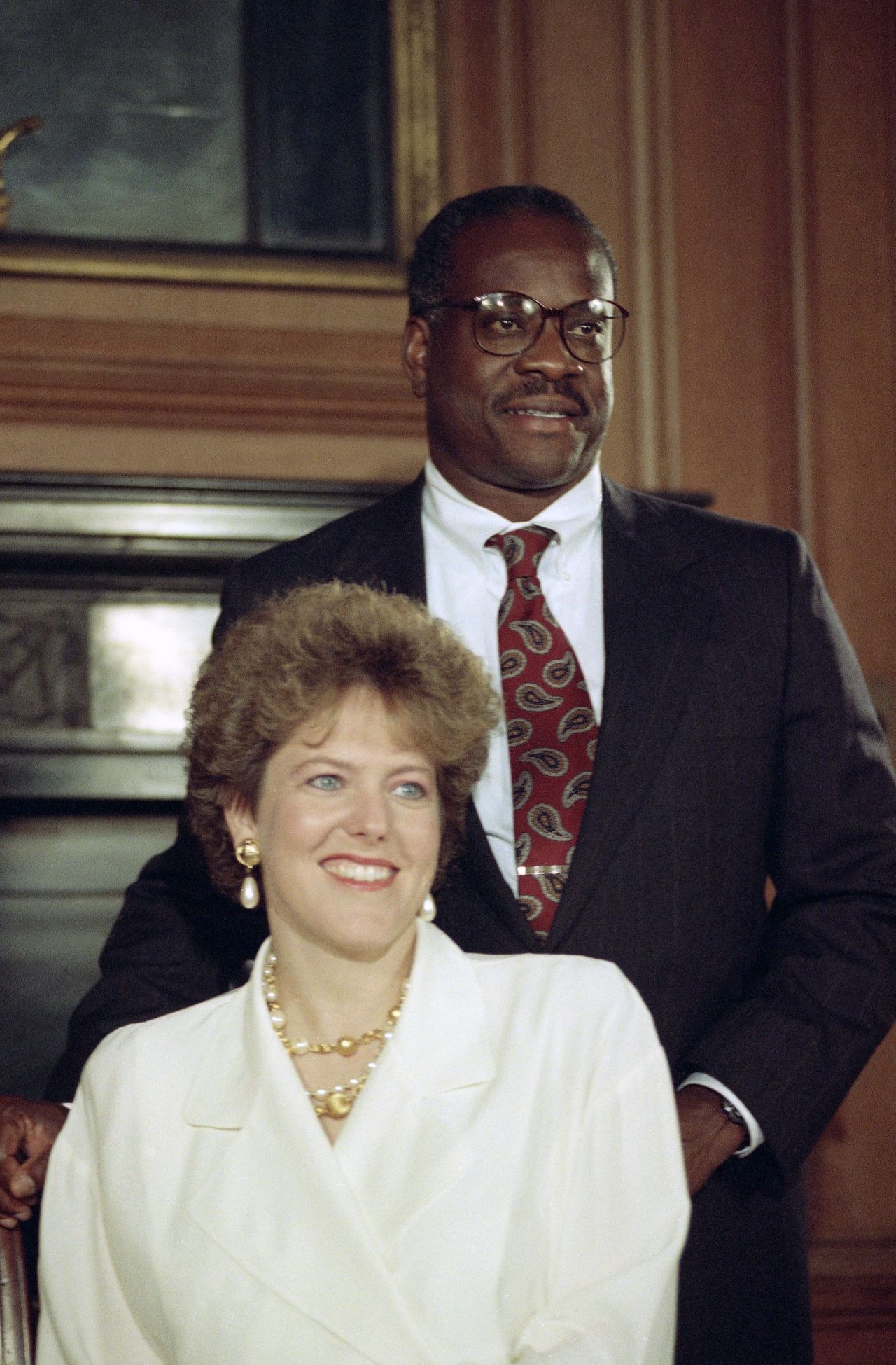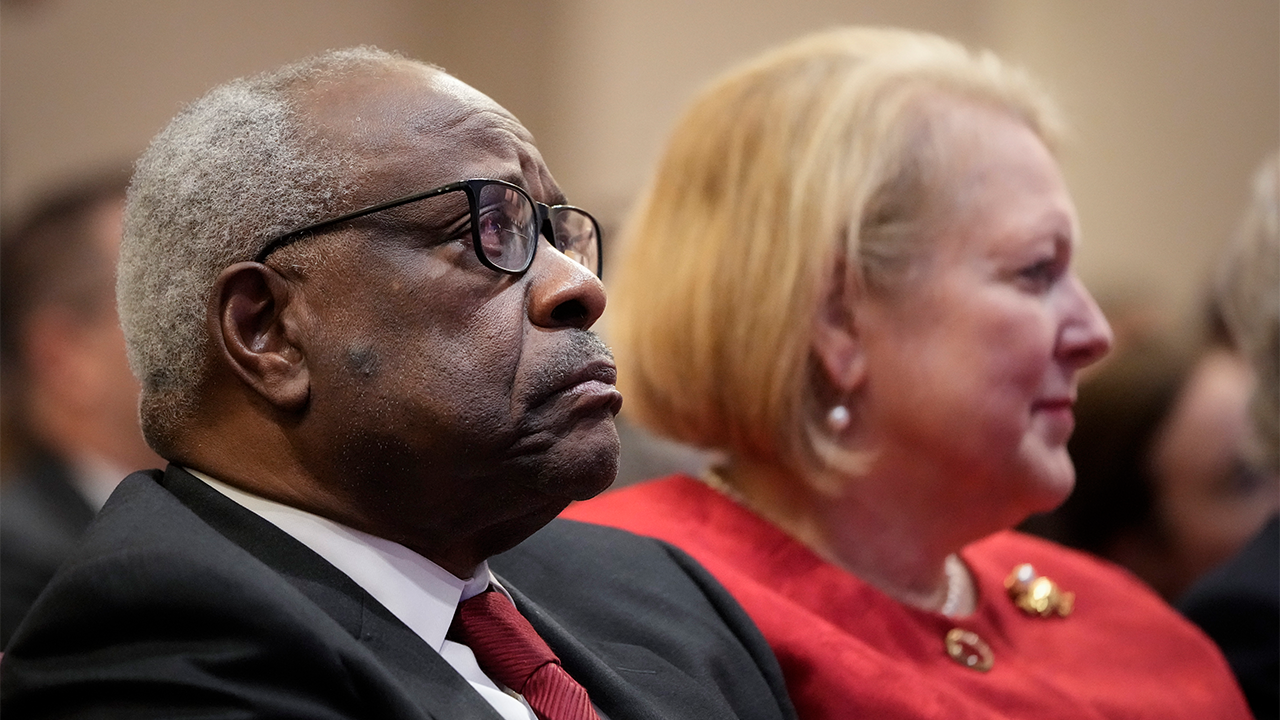When we talk about Clarence Thomas interracial marriage, it’s like opening a door to a complex world of history, law, and social dynamics. This topic isn’t just about two people coming together; it’s about breaking barriers, challenging societal norms, and reshaping how we view relationships in America. Clarence Thomas, a Supreme Court Justice, has been at the center of this conversation for decades, and his life is a testament to the evolving landscape of race relations in the U.S.
Before we dive deep into the intricacies of his marriage, let’s take a moment to reflect on why this matters. Interracial marriages have come a long way since the days of Loving v. Virginia, the landmark case that legalized them nationwide. Yet, even today, they remain a source of debate, admiration, and sometimes controversy. Clarence Thomas’s story adds another layer to this conversation, making it a must-read for anyone interested in understanding the intersection of race, law, and personal relationships.
So, buckle up because we’re about to explore the life of Clarence Thomas, his marriage, and how it fits into the broader narrative of interracial unions in America. This isn’t just a story; it’s a lesson in resilience, love, and the power of standing by your choices despite the odds.
Read also:Beverley Mitchell Wedding The Love Story That Stole Our Hearts
Who Is Clarence Thomas? A Quick Bio
Before we get into the nitty-gritty of Clarence Thomas interracial marriage, let’s talk about the man himself. Born on June 23, 1948, in Pin Point, Georgia, Clarence Thomas grew up in a humble environment, shaped by the segregated South. His journey from a young boy in a small coastal town to becoming one of the most influential figures in American jurisprudence is nothing short of remarkable.
Thomas attended the College of the Holy Cross and later Yale Law School, where he earned his Juris Doctor degree. His career took off when he joined the Reagan administration, eventually leading to his controversial nomination to the Supreme Court in 1991. Despite facing intense scrutiny during his confirmation hearings, Thomas has served as an Associate Justice for over three decades, making significant contributions to American law.
Clarence Thomas: Personal Data
| Name | Clarence Thomas |
|---|---|
| Date of Birth | June 23, 1948 |
| Place of Birth | Pin Point, Georgia |
| Profession | Associate Justice of the Supreme Court of the United States |
| Education | Yale Law School (Juris Doctor) |
| Spouse | Ginni Thomas |
Clarence Thomas Interracial Marriage: The Early Years
When Clarence Thomas tied the knot with Virginia “Ginni” Lamp in 1987, it marked a significant moment in his personal life. Ginni, a conservative activist and writer, came from a different racial background, adding another layer to their union. Interracial marriages were still relatively uncommon at the time, especially in the South, where Thomas grew up. Yet, their relationship stood as a testament to love transcending racial boundaries.
Interestingly, Clarence Thomas’s first marriage was also interracial. He was married to Marilyn Hall Parrish from 1971 to 1984. This fact often gets overlooked in discussions about his second marriage, but it highlights his consistent choice to build relationships across racial lines. Both marriages have been pivotal in shaping his personal and public life.
Why Interracial Marriages Matter
Interracial marriages are more than just personal choices; they reflect societal progress and the ongoing fight against racial discrimination. In the U.S., the number of interracial couples has been steadily increasing, with data from the Pew Research Center showing that 17% of newlyweds in 2015 were in interracial or interethnic marriages. This trend is a sign of a more inclusive society, but it doesn’t come without challenges.
- Interracial couples often face prejudice and stereotypes.
- They must navigate cultural differences and societal expectations.
- Despite these challenges, they contribute to breaking down racial barriers and fostering understanding.
Clarence Thomas and Ginni Thomas: A Partnership Built on Ideals
Ginni Thomas isn’t just Clarence’s spouse; she’s a prominent figure in conservative circles, known for her activism and advocacy. Their partnership is built on shared political beliefs and a commitment to conservative values. While their marriage has faced scrutiny, especially in political circles, it’s undeniable that they’ve carved out a unique space for themselves in American public life.
Read also:Best Love Match For Leo Woman Unlocking The Secrets Of Compatibility
One interesting aspect of their relationship is how they’ve managed to keep their personal lives relatively private despite being in the public eye. Ginni Thomas’s involvement in political activities, including her role in founding Liberty Central, has sometimes overshadowed their personal story. However, their marriage remains a symbol of resilience and mutual respect.
Challenges Faced by Interracial Couples
Every interracial couple faces unique challenges, and Clarence and Ginni Thomas are no exception. From societal judgment to familial disapproval, these challenges can be daunting. Here are some common hurdles faced by interracial couples:
- Societal Judgment: Even in 2023, interracial couples can face stares, comments, and even hostility in certain environments.
- Familial Pressure: Family members may struggle to accept interracial relationships, leading to tension and conflict.
- Cultural Differences: Navigating different cultural norms and traditions can be a delicate balancing act.
The Legal Landscape of Interracial Marriage
To fully appreciate Clarence Thomas interracial marriage, we need to understand the legal history that paved the way for such unions. Before the landmark case of Loving v. Virginia in 1967, interracial marriages were illegal in many states. This case not only struck down anti-miscegenation laws but also set a precedent for equal rights in America.
Clarence Thomas’s career as a Supreme Court Justice adds another dimension to this story. As a jurist, he has often been on the side of conservative interpretations of the law, yet his personal life reflects a more progressive stance on racial integration. This duality makes his story particularly intriguing.
Impact of Loving v. Virginia
The Loving v. Virginia decision was a turning point in American history. It dismantled legal barriers that had prevented people from different races from marrying. This case paved the way for countless couples, including Clarence Thomas, to build lives together without fear of legal repercussions. Here are some key takeaways from the case:
- It invalidated anti-miscegenation laws in 16 states.
- It reinforced the principle of equal protection under the law.
- It laid the foundation for future civil rights victories.
Clarence Thomas’s Influence on Interracial Relationships
As a Supreme Court Justice, Clarence Thomas has had a profound impact on the legal landscape of America. While his opinions often align with conservative values, his personal life serves as a counterpoint to his judicial philosophy. His interracial marriages have sparked discussions about the intersection of personal beliefs and public duty.
Thomas’s influence extends beyond the courtroom. His life story challenges the notion that conservative values are inherently opposed to progressive social change. By choosing to marry across racial lines, he has demonstrated that personal choices can transcend political ideologies.
Public Perception and Media Coverage
Clarence Thomas interracial marriage has been the subject of much media attention, both positive and negative. Critics have accused him of hypocrisy, pointing to his conservative stance on issues like affirmative action. Supporters, on the other hand, see his personal choices as a reflection of his commitment to individual freedom and equal opportunity.
The media coverage of his marriage often mirrors the broader debate about race and relationships in America. It highlights the tension between personal choices and societal expectations, making it a topic worth exploring in depth.
Lessons from Clarence Thomas Interracial Marriage
What can we learn from Clarence Thomas’s story? For starters, it teaches us the importance of standing by our choices, even when they’re unpopular. Interracial marriages, like any relationship, require patience, understanding, and a willingness to navigate challenges together.
Thomas’s life also shows us that personal choices don’t always align with public perceptions. While his judicial philosophy may lean conservative, his personal life reflects a more progressive stance on race relations. This duality is a powerful reminder that people are complex, and their choices can’t always be neatly categorized.
Building Strong Interracial Relationships
If you’re considering an interracial relationship, here are some tips to help you build a strong foundation:
- Communicate Openly: Discuss your expectations, values, and concerns with your partner.
- Embrace Cultural Differences: Celebrate each other’s backgrounds and learn from them.
- Seek Support: Surround yourself with friends and family who support your relationship.
Conclusion: Reflecting on Clarence Thomas Interracial Marriage
In conclusion, Clarence Thomas interracial marriage is more than just a personal story; it’s a reflection of the evolving landscape of race relations in America. From his early years in the segregated South to his current role as a Supreme Court Justice, Thomas’s life has been a journey of resilience and determination. His marriages, both past and present, highlight the power of love to transcend racial boundaries and challenge societal norms.
I encourage you to share your thoughts on this topic in the comments below. Do you think interracial marriages are becoming more accepted in society? How do you think Clarence Thomas’s story contributes to this conversation? And don’t forget to check out our other articles for more insights into the world of race, relationships, and law.
Table of Contents
- Clarence Thomas Interracial Marriage: A Deep Dive into History, Controversy, and Legacy
- Who Is Clarence Thomas? A Quick Bio
- Clarence Thomas: Personal Data
- Clarence Thomas Interracial Marriage: The Early Years
- Why Interracial Marriages Matter
- Clarence Thomas and Ginni Thomas: A Partnership Built on Ideals
- Challenges Faced by Interracial Couples
- The Legal Landscape of Interracial Marriage
- Impact of Loving v. Virginia
- Clarence Thomas’s Influence on Interracial Relationships
- Public Perception and Media Coverage
- Lessons from Clarence Thomas Interracial Marriage
- Building Strong Interracial Relationships
- Conclusion: Reflecting on Clarence Thomas Interracial Marriage


